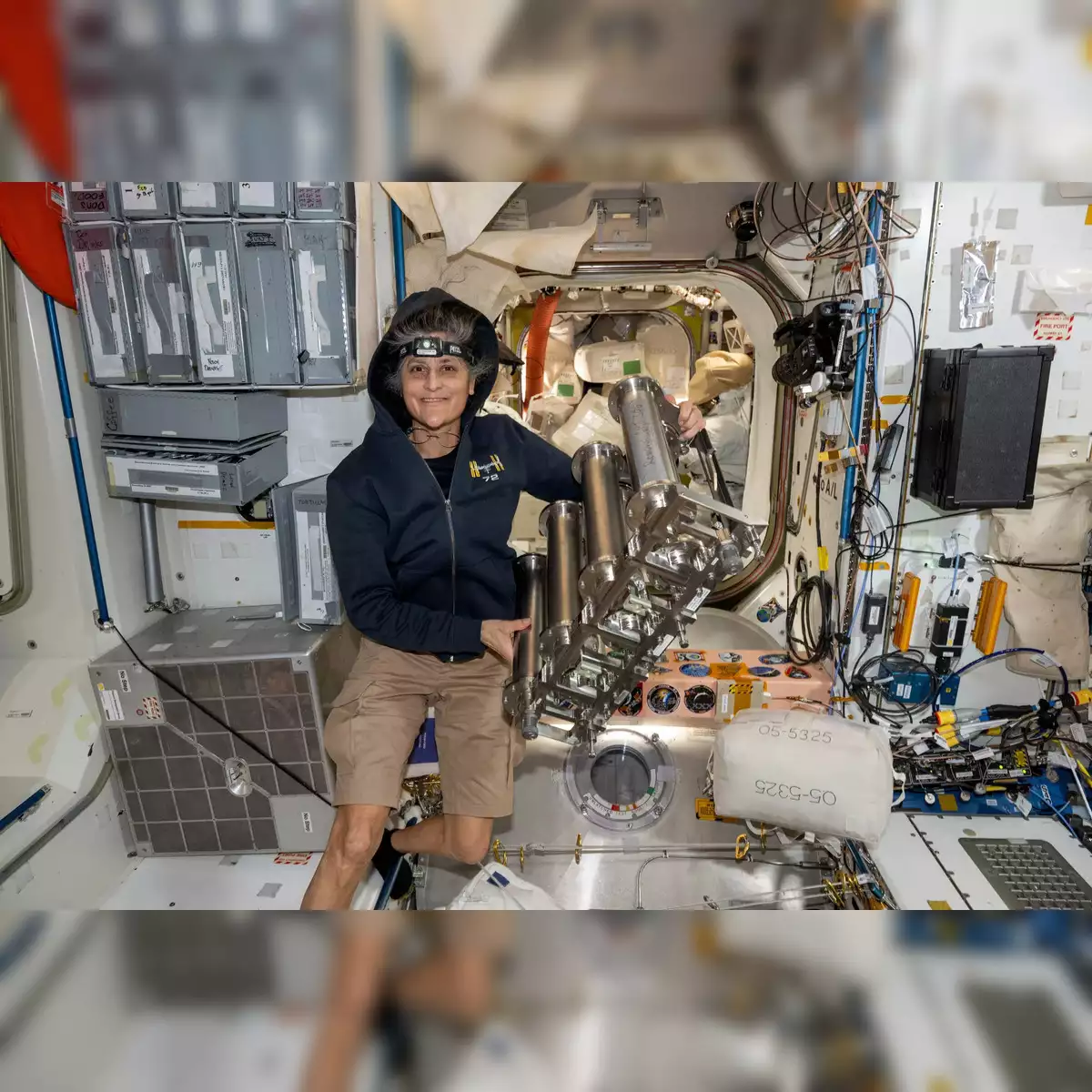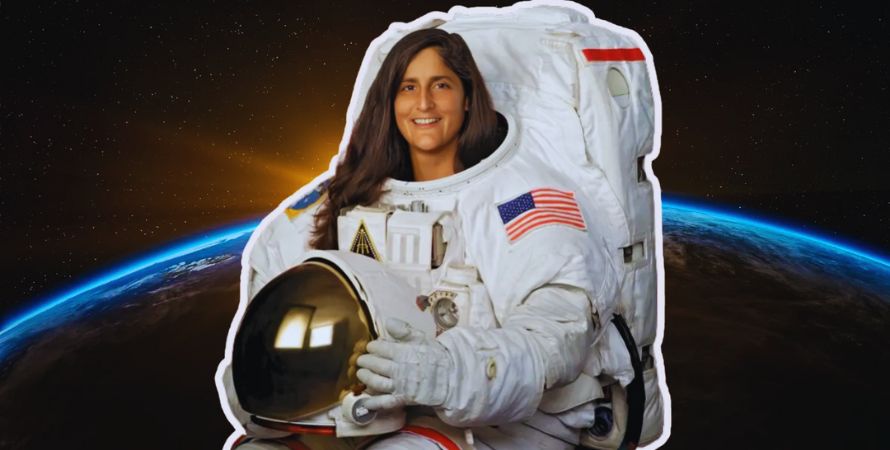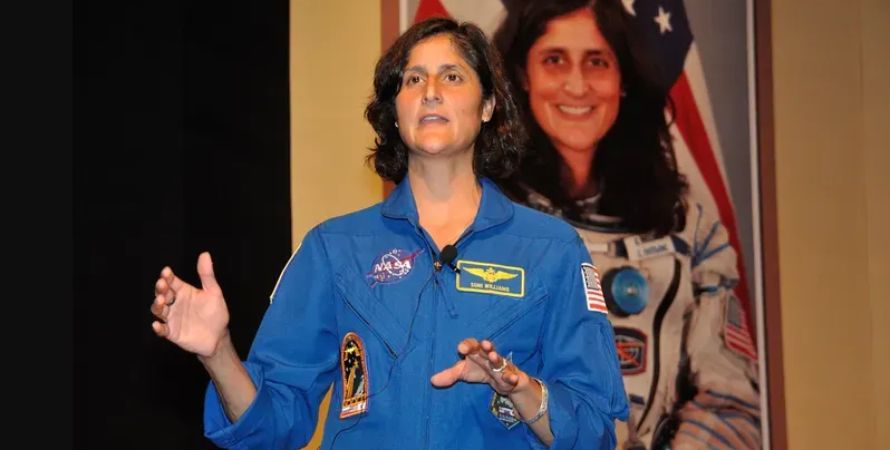Sunita Williams: Trailblazing NASA Astronaut & Space Pioneer
Description:
Explore the inspiring journey of NASA astronaut Sunita Williams, who made history with her space missions and contributed to global scientific advancements in space exploration.
Early Life and Education: The Seeds of Exploration
Sunita Lyn Williams, a name synonymous with courage and groundbreaking achievements in space exploration, embarked on her extraordinary journey long before she ever gazed upon Earth from orbit. Born on September 19, 1965, in Euclid, Ohio, her formative years were shaped by the values and intellectual curiosity fostered by her Indian-American parents, Deepak Pandya, a distinguished neuroanatomist, and Bonnie (née Zalokar) Pandya. Their unwavering support and encouragement played a pivotal role in nurturing Sunita’s inherent thirst for knowledge and her drive to embrace challenging endeavors. This strong familial foundation would prove to be an indispensable asset as she navigated the rigorous path toward becoming a NASA astronaut.


Academic Foundations: Building a Base for the Stars
Sunita’s academic journey was marked by a consistent pursuit of excellence. She graduated from Needham High School in Needham, Massachusetts, in 1983, demonstrating an early aptitude for science and a commitment to her studies. This initial success paved the way for her enrollment at the prestigious United States Naval Academy in Annapolis, Maryland. In 1987, she earned a Bachelor of Science degree in Physical Science, a discipline that provided her with a fundamental understanding of the physical world and the scientific principles that underpin spaceflight. This rigorous academic training instilled in her the analytical skills and problem-solving abilities that would become hallmarks of her distinguished career.
Naval Career and Test Pilot Experience: Honing Skills in Demanding Environments
Following her graduation from the Naval Academy, Sunita dedicated herself to service in the United States Navy, embarking on a career that would further cultivate her leadership skills, technical proficiency, and ability to perform under pressure. As a helicopter pilot, she demonstrated exceptional skill and dedication, accumulating over 3,000 flight hours in more than 30 different aircraft. Her operational deployments and training assignments exposed her to diverse and challenging environments, honing her decision-making abilities and her capacity to work effectively as part of a team. Recognizing her exceptional aptitude and potential, the Navy selected her for the highly competitive Naval Test Pilot School. This rigorous program provided her with specialized training in the evaluation and development of aircraft, further refining her technical expertise and her ability to approach complex engineering challenges with precision and analytical rigor. Her experience as a test pilot was instrumental in preparing her for the unique demands and critical decision-making required in the field of spaceflight.
NASA Astronaut Training and First Spaceflight: Reaching for the Cosmos
In June 1998, Sunita’s lifelong aspiration of becoming an astronaut became a reality when she was selected by the National Aeronautics and Space Administration (NASA) as part of Astronaut Group 17. This pivotal moment marked the culmination of years of dedication, hard work, and unwavering focus. Joining a select group of highly qualified individuals, she embarked on an intensive training program designed to equip her with the diverse skills and knowledge necessary to live and work in the extreme environment of space.
Rigorous Preparation for Space: Mastering the Art and Science of Spaceflight
The astronaut training program at the Johnson Space Center in Houston, Texas, was a comprehensive and demanding curriculum that pushed Sunita to her physical and intellectual limits. She underwent extensive instruction in the intricate systems of the Space Shuttle and the International Space Station (ISS), gaining a deep understanding of the engineering marvels that enable human spaceflight. Robotics training was a crucial component, preparing her for the complex tasks of manipulating robotic arms for satellite deployment, spacecraft repair, and ISS assembly. Physiological training focused on understanding the human body’s response to the unique conditions of space, including microgravity and radiation exposure. Survival training equipped her with the skills necessary to handle emergency situations, while Russian language proficiency was essential for effective communication with international crew members on the ISS. This multifaceted training program ensured that Sunita was thoroughly prepared for the diverse challenges and responsibilities of spaceflight, transforming her from an accomplished pilot into a capable and versatile astronaut.
Contributions to the International Space Station: A Stellar Legacy
Sunita Williams’ career as a NASA astronaut has been defined by her significant contributions to the International Space Station, a testament to international collaboration and a symbol of humanity’s ongoing quest to explore and understand the cosmos. Her two long-duration missions to the ISS were marked by groundbreaking achievements, critical scientific research, and exceptional leadership.


Expedition 14/15: Record-Breaking Spacewalks and Essential Assembly
Her first journey to space commenced on December 9, 2006, aboard the Space Shuttle Discovery as part of the STS-116 mission. The primary objective of this mission was the continued assembly and outfitting of the International Space Station. Upon her arrival at the ISS, Sunita joined the Expedition 14 crew and later transitioned to Expedition 15. During her extended stay aboard the orbiting laboratory, she quickly established herself as a highly skilled and indispensable member of the team. Her expertise was particularly evident during her numerous Extravehicular Activities (EVAs), commonly known as spacewalks. These complex and physically demanding tasks are essential for the maintenance, repair, and assembly of the ISS’s exterior. Sunita’s proficiency and calm demeanor during these critical operations led her to set a new record for the most spacewalks conducted by a woman at that time, completing an impressive seven EVAs with a cumulative duration of 50 hours and 40 minutes. These spacewalks involved intricate tasks such as installing new structural elements, relocating critical equipment, and troubleshooting technical anomalies in the harsh vacuum of space, underscoring her exceptional technical skills and her ability to perform flawlessly under immense pressure.
Expedition 32/33: Command and Continued Research in Orbit
Building upon her previous successes, Sunita embarked on her second long-duration mission to the International Space Station, launching aboard a Soyuz spacecraft on July 15, 2012, as part of Expeditions 32 and 33. This mission further solidified her reputation as a seasoned space explorer and a capable leader. As a flight engineer for Expedition 32, she continued to contribute to the ongoing scientific research and the operational maintenance of the ISS. Her exceptional skills and experience led to her appointment as the commander of Expedition 33, a role that highlighted her leadership abilities and her capacity to effectively manage a diverse international crew in the challenging environment of space. As commander, she was responsible for the overall safety and productivity of the crew and the smooth operation of the orbiting laboratory. During this mission, Sunita participated in several more spacewalks, further extending her record for the most EVAs by a female astronaut. Beyond the critical maintenance and operational tasks, she remained actively involved in a wide array of scientific experiments spanning diverse disciplines, including human physiology, materials science, and Earth observation. Living and working in the unique microgravity environment of the ISS provided invaluable opportunities to study the long-term effects of spaceflight on the human body, contributing significantly to our understanding of human adaptation to space. One of the most memorable highlights of her second mission was her participation in the first-ever triathlon held in space. Utilizing specialized exercise equipment adapted for the microgravity environment – a treadmill with a harness, a stationary bicycle, and a weightlifting machine – she symbolically completed the swimming, biking, and running portions of the Nautica Malibu Triathlon while orbiting hundreds of miles above Earth. This extraordinary feat not only showcased her personal fitness and unwavering determination but also served as an inspiring example of maintaining a healthy lifestyle even in the extreme conditions of space.
Legacy and Inspiration: A Cosmic Impact
Sunita Williams’ contributions to space exploration extend far beyond her remarkable achievements during her time in orbit. Her dedication, leadership, and groundbreaking accomplishments have cemented her place as a true pioneer in human spaceflight, leaving an indelible mark on the history of space exploration and inspiring generations to come.


Role Model and Advocate for STEM: Igniting the Spark of Discovery
Sunita has become an influential role model for people of all ages, particularly young women considering careers in science, technology, engineering, and mathematics (STEM) fields. Her journey from a young girl with a dream to a record-breaking astronaut demonstrates that with hard work, perseverance, and a passion for exploration, seemingly insurmountable goals can be achieved. She actively engages with students and the public, sharing her experiences, insights, and the wonders of space exploration. Her ability to connect with diverse audiences and articulate the importance of scientific inquiry and technological innovation has made her a powerful advocate for STEM education. Through her inspiring story, she encourages young people to pursue their interests in these critical fields, fostering the next generation of scientists, engineers, and explorers who will continue to push the boundaries of human knowledge and endeavor.
Shaping the Future of Space Exploration: Guiding the Next Giant Leaps
Sunita’s expertise and experience are invaluable as NASA looks towards future endeavors in space exploration, including ambitious programs like Artemis, which aims to return humans to the Moon and pave the way for eventual crewed missions to Mars. Her insights into the challenges and opportunities of long-duration spaceflight, her leadership experience in complex operational environments, and her deep understanding of spacecraft systems contribute significantly to the planning and execution of these future missions. Her participation in various advisory roles and her willingness to share her knowledge help shape the strategies and technologies that will define the next era of human space exploration. The legacy of Sunita Williams is not just about her past achievements; it is also about her ongoing influence in shaping the future of our journey into the cosmos, inspiring future generations to continue the quest for knowledge and exploration beyond the confines of our planet. Her impact on the field of human spaceflight is profound and her story will continue to be told and celebrated as a testament to the human spirit’s boundless capacity for exploration and discovery.
